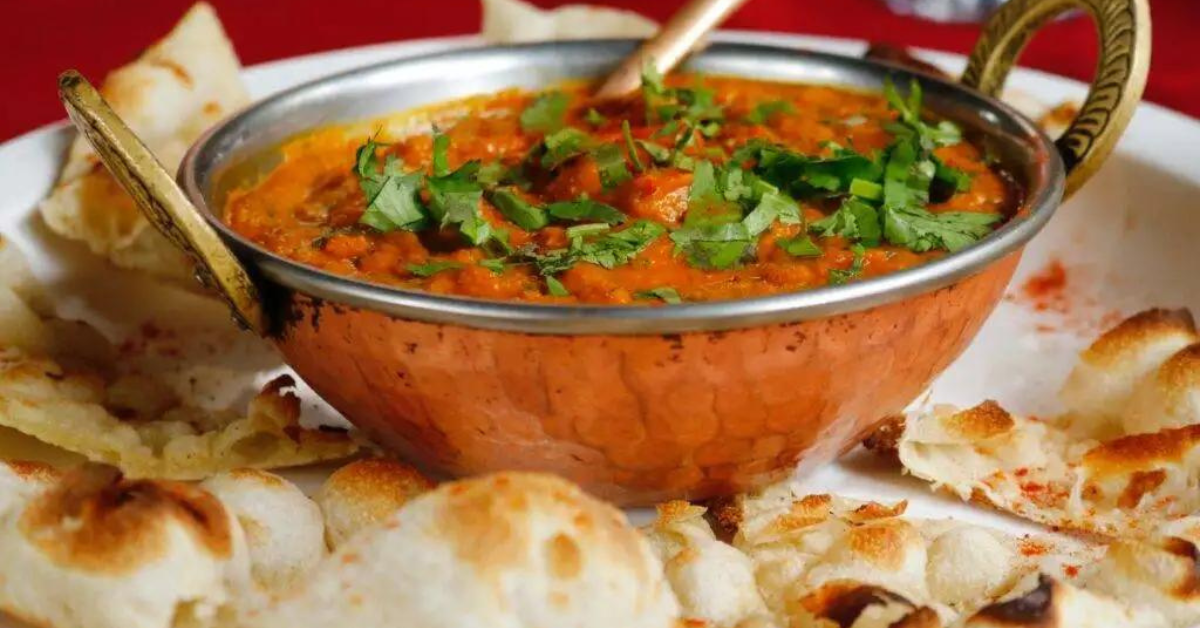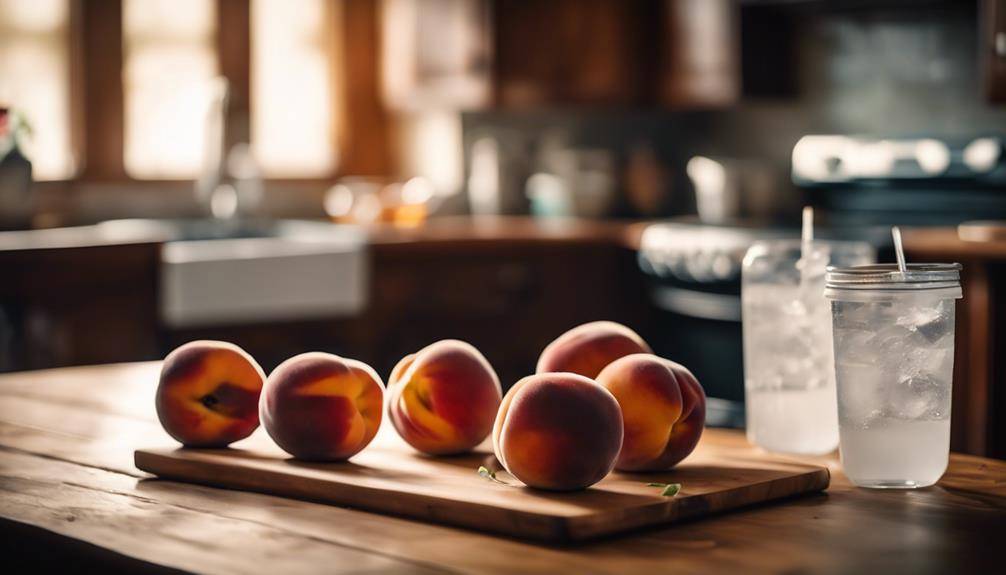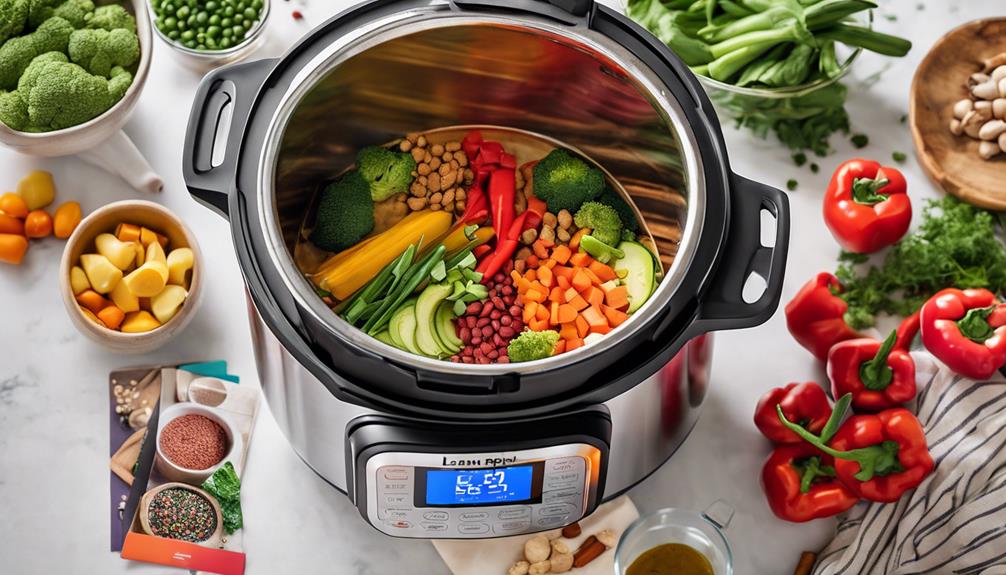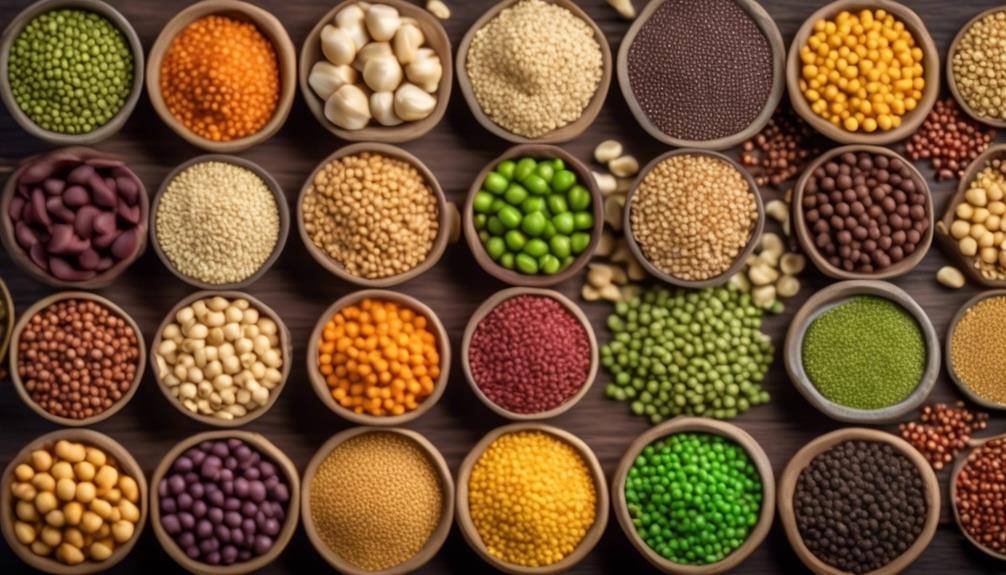How To: 7 Essential Steps for Basic Cooking Skills
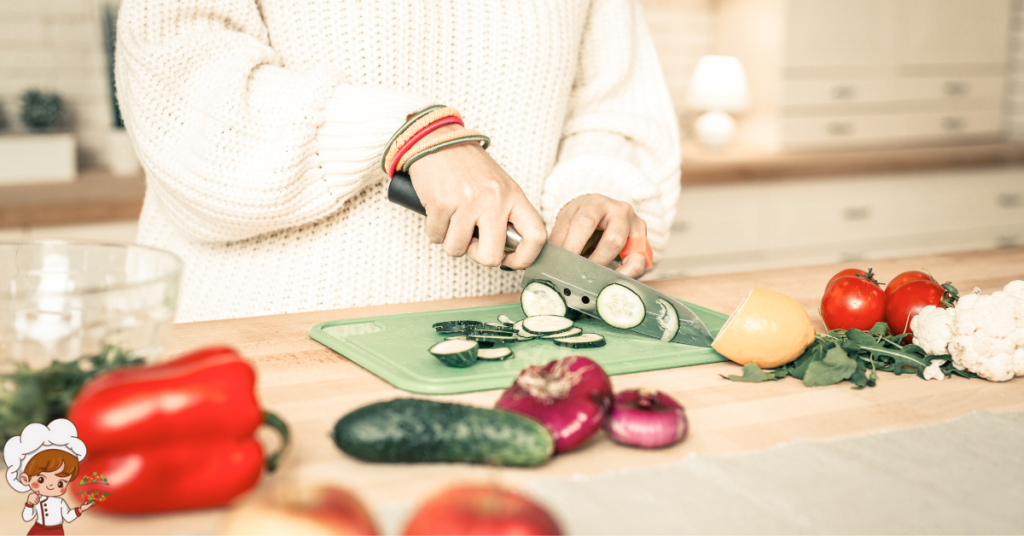
Discover the 7 Essential Steps for Basic Cooking Skills that will turn you into a culinary master! Get ready to Set Up Your Kitchen with all the tools and ingredients you need. Then, Master Knife Skills to chop, slice, and dice like a pro. Understand Cooking Techniques to know when to sauté, simmer, or roast. Learn about Flavor Profiles to create dishes that burst with deliciousness. Properly Use Seasonings and Herbs to enhance the taste of your meals. Master Basic Cooking Methods like boiling, grilling, and baking. And finally, explore Recipe Adaptation and Creativity to put your own unique twist on classic dishes. Let’s get cooking!
Setting Up Your Kitchen
To start setting up your kitchen, gather all the necessary tools and ingredients. Organizing your tools is essential for efficient cooking. Invest in a good set of knives, measuring cups and spoons, mixing bowls, cutting boards, and pots and pans. Having these tools readily available will make your cooking experience much smoother.
Next, it’s time to stock your pantry. Start by making a list of staple ingredients like flour, sugar, salt, and various spices. These items will form the foundation of many recipes. Don’t forget to include cooking oils, vinegar, and condiments like soy sauce and ketchup. Having a well-stocked pantry will save you from last-minute trips to the grocery store.
When organizing your pantry, consider using clear labeled containers for dry goods like pasta, rice, and beans. This will make it easier to find what you need and keep everything fresh. Utilize shelves or storage racks to maximize space and keep similar items together. You can also invest in drawer dividers or small baskets to keep your spices and baking supplies neat and accessible.
Lastly, don’t forget about your refrigerator and freezer. Keep them clean and organized by using clear storage containers for leftovers and using labels for easy identification. Make sure to rotate items, placing the oldest ones in the front, to prevent food waste.
Mastering Knife Skills
Mastering knife skills is crucial for efficient and precise cooking in your well-set up kitchen. Not only will it make your prep work faster, but it will also ensure that your ingredients are cut uniformly, leading to better cooking results. However, before you start slicing and dicing, it’s important to prioritize knife safety. Always hold the knife by the handle, keeping your fingers away from the blade. When cutting, use a sturdy cutting board to prevent accidents and keep the blade sharp to minimize the risk of slips.
In addition to safety, proper knife maintenance is essential for optimal performance. Regularly sharpening your knives will not only make them more effective but also safer to use. Dull blades are more likely to slip and cause accidents. You can use a sharpening stone or a honing rod to maintain the sharpness of your knives. Remember to wash and dry your knives by hand, as dishwashers can cause blades to become dull or even rust. Storing your knives properly is also crucial for both safety and maintenance. Consider using a knife block or a magnetic strip to keep your knives organized and easily accessible.
Understanding Cooking Techniques
To improve your basic cooking skills, it’s important to understand various cooking techniques. Different cooking methods can greatly influence the taste, texture, and overall outcome of your dishes. Whether you’re boiling, frying, baking, or grilling, each technique requires specific knowledge and skills. So, let’s dive into the world of cooking techniques and uncover some common mistakes to avoid.
One of the most common cooking mistakes is not understanding the difference between sautéing and stir-frying. Sautéing involves cooking food quickly in a small amount of oil or butter over high heat. On the other hand, stir-frying is a Chinese cooking technique that requires tossing and stirring ingredients in a hot wok or pan with oil. Knowing the distinction between these two methods can make a significant difference in the flavor and texture of your dish.
Another mistake to avoid is overcooking your meat. Whether you’re grilling, roasting, or pan-searing, it’s crucial to cook meat to the right internal temperature. Overcooking can result in dry, tough meat, while undercooking can lead to foodborne illnesses. Investing in a meat thermometer and learning the recommended cooking temperatures for different types of meat will ensure that your meat is cooked to perfection every time.
One cooking technique that often intimidates beginners is baking. To achieve light and fluffy baked goods, it’s important to accurately measure your ingredients and follow the recipe’s instructions. Additionally, understanding the difference between baking soda and baking powder is crucial for achieving the right rise in your baked goods. Baking soda requires an acidic ingredient to activate it, while baking powder contains its own acid.
Learning Flavor Profiles
To develop a well-rounded understanding of cooking, you should start by exploring different flavor profiles. Understanding flavor profiles is essential because it allows you to create delicious and balanced dishes that will impress your friends and family. Here are three things to keep in mind when learning about flavor profiles:
- Pairing ingredients: One of the first steps in creating a flavorful dish is understanding how different ingredients work together. Some ingredients have natural affinities, while others create unexpected flavor combinations. For example, pairing sweet and savory flavors can create a delicious contrast, like adding a touch of honey to roasted vegetables. Experiment with different ingredient combinations to discover new and exciting flavors.
- Balancing flavors: Achieving a harmonious balance of flavors is key to creating a well-rounded dish. The four primary taste profiles are sweet, salty, sour, and bitter. Understanding how to balance these flavors is crucial. For instance, if a dish is too salty, you can balance it out by adding a touch of acidity, such as a squeeze of lemon juice. Experimenting with different ingredients and adjusting the seasoning will help you develop your palate and create perfectly balanced dishes.
- Experimentation and creativity: Learning about flavor profiles is not just about following recipes; it’s about exploring your own creativity in the kitchen. Don’t be afraid to try new ingredients, flavors, and techniques. Keep a journal of your experiments, noting which flavor combinations work well and which ones don’t. This will help you develop your own unique style and taste preferences.
Properly Using Seasonings and Herbs
Once you have a solid understanding of flavor profiles, you can enhance your cooking skills by learning how to properly use seasonings and herbs. These ingredients play a crucial role in elevating the flavors of your dishes and adding depth and complexity to your meals. Whether you’re baking a cake or preparing a salad, knowing how to use herbs and seasonings correctly will take your cooking to the next level.
When it comes to baking, herbs can be used in a variety of ways to enhance the flavors of your sweet treats. For example, adding a pinch of cinnamon or nutmeg to your cake batter can add warmth and depth to the overall taste. Similarly, incorporating herbs like lavender or rosemary into your shortbread cookies can give them a unique and aromatic twist. Don’t be afraid to experiment with different herbs and spices in your baking – you might just discover a new favorite flavor combination!
Incorporating seasonings in salads is another great way to elevate the taste of your greens. Instead of simply relying on salt and pepper, try adding some dried herbs like oregano or thyme to your salad dressing. These herbs can add a burst of flavor and freshness to your greens, making your salad more exciting and satisfying. Additionally, consider using a sprinkle of paprika or cayenne pepper to give your salad a hint of spice. The possibilities are endless when it comes to experimenting with seasonings in salads.
Mastering Basic Cooking Methods
You can start mastering basic cooking methods by understanding the importance of proper heat control. Cooking methods such as sautéing, boiling, and roasting require different levels of heat to achieve the desired results. Here are some tips to help you navigate the world of basic cooking methods:
- Sautéing: This method involves quickly cooking food in a hot pan with a small amount of oil or butter. It is important to preheat the pan before adding the ingredients to ensure even cooking. Use a non-stick pan to prevent sticking and make sure to stir the food constantly to avoid burning.
- Boiling: Boiling is a simple yet essential cooking method, especially for pasta, rice, and vegetables. To properly boil food, use a large pot filled with enough water to cover the ingredients. Add salt to enhance the flavor and bring the water to a rolling boil before adding the food. Keep an eye on the cooking time to prevent overcooking.
- Roasting: Roasting is a dry heat cooking method that is perfect for meats, vegetables, and even fruits. Preheat your oven to the desired temperature and use a roasting pan or baking sheet lined with parchment paper. Make sure to spread the ingredients evenly for even cooking and browning. Time management is crucial when roasting, so keep an eye on the cooking time to prevent burning.
Exploring Recipe Adaptation and Creativity
Get creative with your cooking by adapting recipes to suit your personal taste and preferences. Recipe modification is a great way to add your own twist to classic dishes and explore new flavors. By improvising ingredients, you can create unique and delicious meals that are tailored to your liking.
When adapting a recipe, start by identifying the key ingredients and flavors. Consider what you enjoy and what you want to highlight in the dish. For example, if a recipe calls for cilantro but you’re not a fan, try substituting it with parsley or basil. Similarly, if a dish is too spicy for your taste, reduce the amount of chili powder or replace it with a milder spice.
Don’t be afraid to experiment with different herbs, spices, and seasonings. They can completely transform a dish and make it your own. You can also modify cooking techniques to achieve different textures and flavors. For instance, if a recipe calls for frying, you can try baking or grilling instead.
Another way to adapt recipes is by incorporating ingredients that you love. If you’re a fan of mushrooms, add them to a pasta dish or stir-fry. If you enjoy a particular type of cheese, use it in a recipe that calls for a different variety. The possibilities are endless!
Frequently Asked Questions: 7 Essential Steps for Basic Cooking Skills
How Do I Properly Store Fresh Herbs to Keep Them Fresh for Longer?
To keep your fresh herbs at their freshest, store them properly. This means washing and drying them thoroughly, wrapping them in a damp paper towel, and placing them in a resealable bag in the refrigerator.
What Are Some Common Mistakes to Avoid When Using Seasonings in Cooking?
When using seasonings in cooking, common mistakes to avoid include using too much or too little, not tasting as you go, and not considering the flavor profile of your dish. Follow these tips to use seasonings effectively.
Can You Suggest Some Recipe Adaptations for Vegan or Vegetarian Diets?
Looking for recipe ideas for gluten-free diets? Want to know how to make plant-based protein substitutes? Here are some suggestions to adapt your recipes for vegan or vegetarian diets.
How Can I Enhance the Flavor of My Dishes Without Using Excessive Amounts of Salt?
To enhance flavor without relying on salt, try using alternative flavor enhancers like herbs, spices, and vinegars. Get creative with spice combinations to add depth and complexity to your dishes.
Are There Any Cooking Techniques That Are Not Commonly Used but Can Greatly Improve the Taste of a Dish?
Uncommon cooking techniques can greatly enhance the taste of your dishes. Try flavor-enhancing methods like sous vide, brining, or smoking. These techniques infuse your food with delicious flavors and take your cooking skills to the next level.
Conclusion
Congratulations! You have now learned the 7 essential steps for basic cooking skills. By setting up your kitchen, mastering knife skills, understanding cooking techniques, learning flavor profiles, properly using seasonings and herbs, mastering basic cooking methods, and exploring recipe adaptation and creativity, you are well on your way to becoming a skilled home cook. So go ahead, put your newfound knowledge to use and create delicious meals that will impress your family and friends. Happy cooking!




